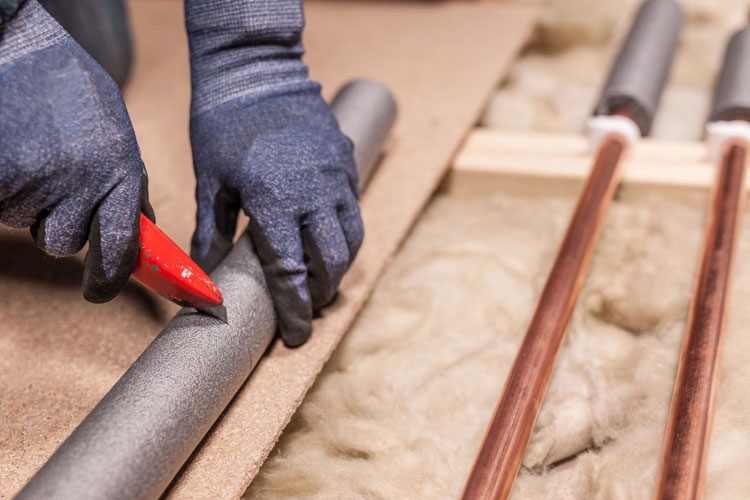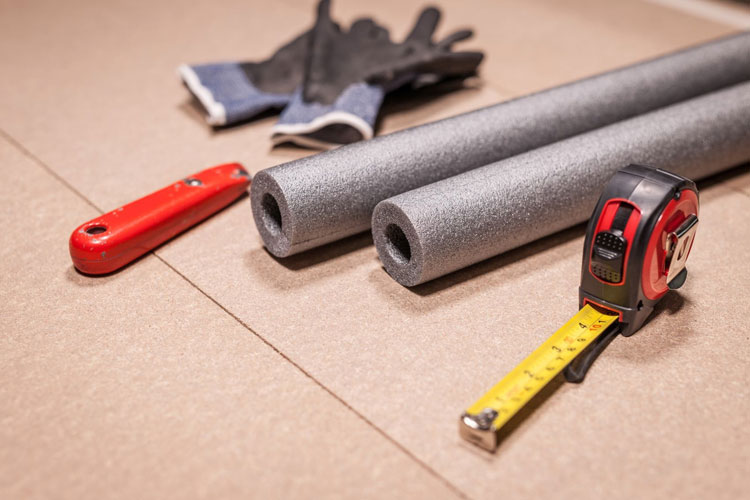- Home
- Your water
- Lagging and insulating your pipes
Lagging and insulating your pipes
Find out how to lag your pipes, what materials and equipment you will need, and what types of pipes need insulating.
What is pipe lagging?
Pipe lagging, otherwise known as pipe insulation, is a foam material designed to be wrapped around pipes.
It is used to prevent pipes exposed to the cold from freezing and bursting when temperatures drop.
You can also use it to minimise heat loss from hot water pipes.

What pipes need lagging?
You should apply lagging to outdoor pipes in garages and outbuildings as these are most likely to freeze during cold weather.
Insulate indoor pipes in draughty and cold areas like attics and basements to prevent freezing.
To save energy and money, insulate and lag indoor hot water supply and central heating pipes to stop heat from escaping.
What materials and equipment do you need?
Before you start, you will need:
- pipe lagging
- a measuring tape
- a utility knife
- a pen
- safety gloves
- insulation tape.
You should be able to buy these items online or from your local DIY store.
Measure the diameter of your pipe before purchasing your lagging to make sure it will fit.

How to lag pipes
- Measure the length of pipe you want to cover.
- Mark the correct length on the lagging using your pen.
- Carefully cut the lagging with your utility knife.
- Place the lagging around your pipe.
You should try to cover all joints and bends to ensure your pipes are fully covered.
Using insulation tape to connect pieces of lagging will add an extra layer of protection from the cold.
When should you lag your pipes?
You should lag your pipes before temperatures start dropping.
Doing it before the start of autumn will help to ensure you are prepared for the cold weather.
Your pipes are at the highest risk of freezing or bursting when temperatures fall below 0oC.
What are the benefits?
Lagging your pipes can help to:
- prevent freezing and bursting
- prevent heat loss and save energy
- save money on your energy bills
- reduce condensation and dampness
- improve your water pressure
- reduce unwanted noise.
How to thaw frozen pipes
If you have a frozen pipe, thaw it straight away to prevent a burst.
What to do if you have a burst pipe
If you experience a burst pipe, act immediately to limit or prevent water damage.
